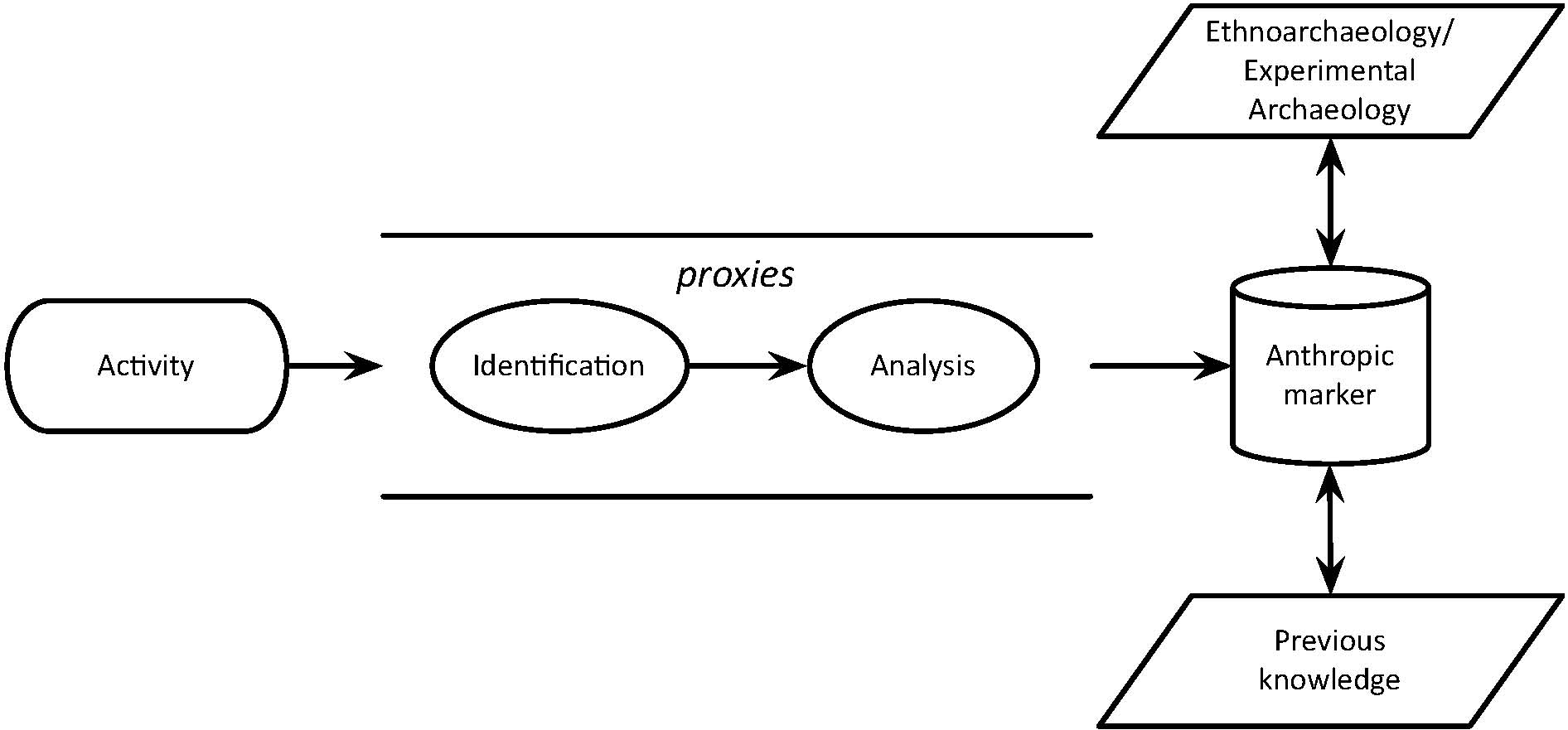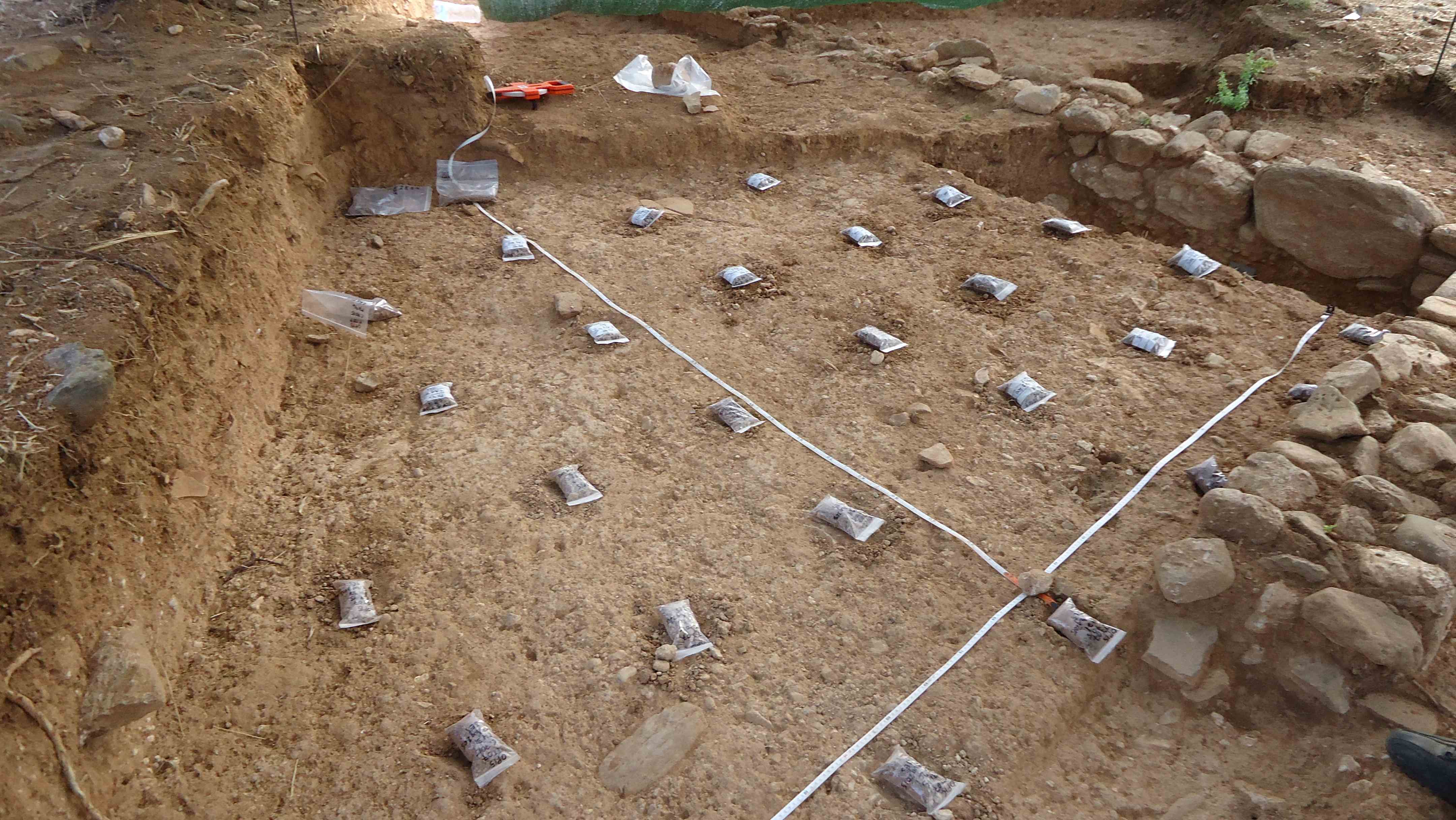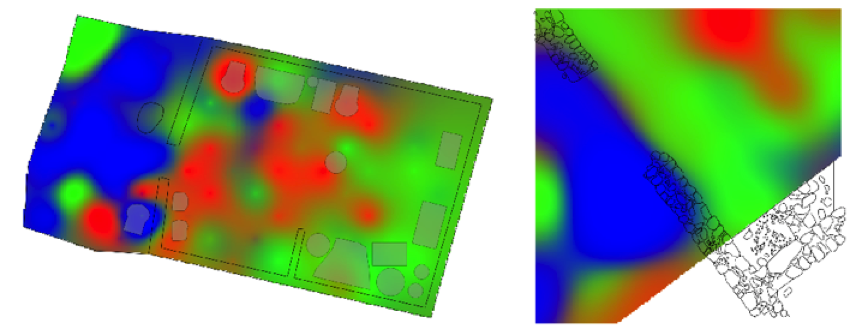MoMArq
MoMArq
Modelling and Simulation of Anthropic Activity Markers: from Ethnography to Archaeology
(Modelado y Simulación de Marcadores de Actividad Antrópicas:de lo etnográfico al arqueológico)
MoMArq (Modelling of Anthropic Activity Markers: From Ethnography to Archaeology) is an innovative, transdisciplinary research project that applies concepts derived from ecology and biology to ethnography and archaeology through the use of mathematical modelling. The main aim of the project is to develop a methodology that allows studying some aspects of long-term human behavior. The project focuses on the creation of formal models of domestic activity and the spatial distribution of their traces in the archaeological record. Particularly, it centres on activities related to storage, processing and consumption of plant food. In this respect, this project represents the first phase of a long-term research, aimed at the characterisation and understanding of past and present socioecological systems.
Households are seen as the fundamental units of social interactions and the basis of socioecological systems. Moreover, domestic activities represent one of the main focuses of archaeological research. Therefore, finding a strong methodology to detect and interpret domestic activities in the archaeological record is fundamental to reconstruct past socioecological systems. During the project, statistical models of spatial distribution of domestic activities were created based on previous ethnographic work and on cross-cultural ethnographic research. Mathematical, statistical and geostatistical models were applied to an ethnographic and an ethnoarchaeological case-study to evaluate the potential of the methodology and draw conclusions on the use of domestic space in the archaeological case.
Scientific Rationale
 The project proposal is grounded on the fact that people recurrently use the same domestic spaces for performing similar activities (Barba 1986, 2007; Hodder 2007). This repetitive use of spaces produces an accumulation of physical and chemical evidences related to the activity that has taken place in a particular spot. Ethnoarchaeology and experimental archaeology drive the reasoning that allows to create models connecting certain proxies to the activity or activities that produced them and their spatial patterns. These models are here defined as Anthropic Activity Markers - AAM (Figure 1). Ethnography provides privileged contexts for the study of AAM, as it allows direct link between proxies patterns and the activity that produced them (through direct observation and recording). Indeed ethnographic contexts allow us to experiment with and to calibrate our analytical methods in a controlled environment where the results are easily validated offering a support for the formalisation of archaeological theories (see for example Boivin 2000; Lancelotti and Madella 2012; Milek 2012).
The project proposal is grounded on the fact that people recurrently use the same domestic spaces for performing similar activities (Barba 1986, 2007; Hodder 2007). This repetitive use of spaces produces an accumulation of physical and chemical evidences related to the activity that has taken place in a particular spot. Ethnoarchaeology and experimental archaeology drive the reasoning that allows to create models connecting certain proxies to the activity or activities that produced them and their spatial patterns. These models are here defined as Anthropic Activity Markers - AAM (Figure 1). Ethnography provides privileged contexts for the study of AAM, as it allows direct link between proxies patterns and the activity that produced them (through direct observation and recording). Indeed ethnographic contexts allow us to experiment with and to calibrate our analytical methods in a controlled environment where the results are easily validated offering a support for the formalisation of archaeological theories (see for example Boivin 2000; Lancelotti and Madella 2012; Milek 2012).
Main objectives
The main objective of the project is to develop a sound methodology for the identification of AAM in order to provide reliable tools for the interpretation of past human behaviour.
Specifically the objectives of the project are:
- Create an ethnoarchaeological, cross-cultural database of the spatial distribution of domestic activities in agricultural and pastoral societies living in arid and semi-arid areas.
- Conceptualise formal models of spatial distribution of domestic activities in traditional contexts building on existing ethnographical data.
- Perform statistical analyses and mathematical modelling on the data obtained both form ethnographical and archaeological study-cases.
- Use the methodology developed to interpret archaeological data and infer use of space in an archaeological domestic context.
The archaeological case study: Olynthos (Greece)

The archaeological site of Olynthos is located in a between the Kassandra and Sithonia peninsulas in Northern Greece, slightly inland from the Gulf of Toroni and east of the modern village of Nea Olinthos. The North Hill (the part of the site where the samples analysed come from) is thought to have been founded in the late fifth century BCE and quickly abandoned after the raid of Philip II of Macedon in 348 BCE. Olynthos is today one of the best sources of information on Greek classical houses due to the high number of buildings excavated in the 1920s and 1930s by David M. Robinson (Johns Hopkins University, American School of Classical Studies at Athens). The site is currently under excavations by the Olynthos Project, which was initiated with permission from the Greek Ministry of Culture, in spring 2014, under the direction of the 16th Ephorate of Prehistoric and Classical Antiquities, in collaboration with the Universities of Liverpool and Michigan and under the auspices of the British School at Athens. From 2015 onwards the Project has become a collaboration with a number of different Ephorates of the Greek Archaeological Service.
Methodology
Conceptualisation of formal models from ethnographic contexts
Models are widely used in social sciences in order to analyse and better comprehend complex phenomena. Within this project, mathematical and statistical models were used to understand two key aspects of the use of space related to food production and consumption activities in domestic spaces:
- Cross-cultural potential of ethnography-based models
- Proxies distribution, related to different activities
Standard Cross Cultural Ethnoarchaeological Database
In order to confirm that models developed in one context (in this case rural North Gujarat, India) are appliable to different contexts both in time and space we constructed a databes of ethnoarchaeological, economic and environmental data of 16 agricultural and pastoralist societes. This is based on the Standard Cross Cultural Sample (Murdock and White 1969) with additional information collected from e-HRAF database and selected ethnographic and arcchitecture pubblications.
Sample analysis
Samples were analysed for:
- Phytoliths: biogenic silica produced by the plants processed within the household.
- Starch: granules of energy storage produced by plant and directly related to plants consumption.
- Multi-element geochemistry: quantified through ICP-AES to measure their concentration, some of these elements are highly correlated with human activities.
- Spot-tests: to measure the concentration of phosphates, fatty acids and protein residues.
A detailed description of the analytical methodology can be found in Rondelli, Lancelotti et al. 2014.
Statistical and mathematical modelling and application
- Step 0: data structure inspection. Descriptive statistics and dimension reduction were performed on the data in order to understand data structure.
- Step 1: labelling of data points. According to the statistical analysis performed in step 0 we defined possible groups of samples. We corrected the statistical grouping based on a) a combination of observations and previous analyses in the ethnographic case; and b) assumptions resulted form the models build through the ethnographic comparison in the archaeological case.
- Step 2: hypothesis generation. We first subset the variables through a Leap and Bound algorithm that derives which combination of variable best explains the assumed distribution. We then run this variables through an LDA analysis to derive the model to be applied.
- Step 3: application of model and visualisation. The L
 DA model was applied to the archaeological data and the posterior probabilities computed by the model visualised through an RGB image.
DA model was applied to the archaeological data and the posterior probabilities computed by the model visualised through an RGB image.
Results
Cross-Cultural Ethnoarchaeological Database
An ethnoarchaeological database based on the Standard Cross Cultural Sample (Murdock and White 1969) for 16 agricultural and pastoral societies of semi-arid and arid areas is available though this link. This SQL database is free to download and use to anyone interested.
Statistical modelling
All data, together with the R script that can be used to reproduce our results are available through this link.
Output
MoMarq has yielded exceptional results both in regard to the methodology of analysis and to the interpretation of the archaeological record. The project has generated three main publications in indexed journals:
- Lancelotti C, Alcaina Mateos J, Carrer F, Negre J. 2017. Intra-site spatial analysis in ethnoarchaeology. Environmental Archaeology. doi 10.1080/14614103.2017.1299908. IF: 0.857 (2015); Quartile: Q4 Geosciences, multidisciplinary. ISSN: 1461-4103
- Lancelotti C, Ruiz-Perez J; García-Granero JJ. 2017. Investigating fuel and fireplaces with a combination of phytoliths and multi-element analysis: an ethnographic experiment. Vegetation History and Archaeobotany 26(1): 75 – 83. IF: 2,039 (2015); Quartile: Q1 Paleontology; Q2 Animal and Plant Sciences. ISSN: 0939-6314.
- Negre J; Muñoz F; Lancelotti C. 2016. Geostatistical modelling of chemical residues on archaeological floors in the presence of barriers. Journal of Archaeological Science 70: 91 – 101. IF: 2,255 (2015); Quartile: Q1 Anthroplogy. ISSN: 0305-4403.
Pre-prints of the three papers are available freely though the e-Repository of Universitat Pompeu Fabra.
In addition, the project and its main results have been presented at nine international conferences
- 43rd Computer Applications and Quantitative Methods in Archaeology (CAA -Siena, Italy 2015)
- 80th Annual Meeting of the Society for American Archaeology (SAA - San Francisco, USA 2015)
- 21th Annual Meeting of the European Association of Archaeologist (EAA - Glasgow, UK 2015)
- International Conference on Current Ethnoarchaeology (Rome, Italy 2015)
- 81st Annual Meeting of the Society for American Archaeology (SAA - Orlando, USA 2016)
- 8th World Archaeological Congress (WAC - Kyoto, Japan 2016)
- 2nd Harappa International Conference (Sahiwal, Pakistan 2016)
- 82nd Annual Meeting of the Society for American Archaeology (SAA - Vancouver, Canada 2017).
References
Barba, L., 2007. Chemical residues in lime-plastered archaeological floors. Geoarchaeology 22, 439-452.
Boivin N. 2000. Life rhythms and floor sequences: excavating time in rural Rajasthan and Neolithic Çatalhöyük. World Archaeology 31(3), 367-388.
Hodder I. 2007. Çatalhöyük in the context of the Middle Eastern Neolithic. Annual Review of Anthropology 36, 105-120.
Lancelotti C., Madella M. 2012. The 'invisible' product: Developing markers for identifying dung in archaeological contexts. Journal of Archaeological Science 39, 953-963.
Lancelotti C., Ruiz-Pérez J., García-Granero J.J., and Madella M. 2014. Investigating the use of fuel through a combination of phytoliths and multi-element analysis. An ethnographic and geospatial experiment. Presentación oral en el "9th International Meeting for Phytolith Research", Brussels, Setiembre 2014.
Milek K. 2012. Floor formation processes and the interpretation of site activity areas: An ethnoarchaeological study of turf buildings at Thverá, northeast Iceland. Journal of Anthropological Archaeology 31, 119-137.
Murdock G.P. and White D.R. 1969. Standard Cross-Cultural Sample. Ethnology 9, 329–369.
Rondelli B., Lancelotti C., Madella M., Pecci A., Balbo A.L., Ruiz Perez J., Inserra F., Gadekar C., Cau M.A., Ajithprasad P. 2014. Anthropic activity markers and spatial variability: an ethnoarchaeological experiment in a domestic unit of Northern Gujarat (India). Journal of Archaeological Science 41, 482 - 492.
Rubio-Campillo X., Cela J.M., Hernàndez Cardona F.X. 2012. Simulating archaeologists? Using agent-based modeling to improve battlefield excavations. Journal of Archaeological Science 39, 347-356.
 Funding for this project has been granted by the Spanish Ministry of Economy and Competitiveness through the I+D+i "Excelencia' projects 2014 (HAR2014-55518-P)
Funding for this project has been granted by the Spanish Ministry of Economy and Competitiveness through the I+D+i "Excelencia' projects 2014 (HAR2014-55518-P)
